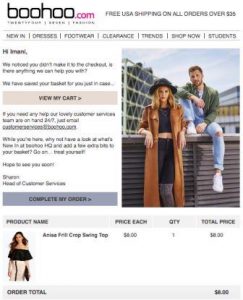As a newbie to this business a couple of years back, I distinctly remember feeling a little awkward when I didn’t have a clear answer to the most obvious question:
What is digital marketing?

The scope of information in the various answers I found made my head swim, but I quickly deduced that digital marketing was a constantly expanding collection of methods to deliver branding messages.
To put it simply: Digital marketing is a way to build your brand online and help your ideal customers understand who you are, what you stand for, and why they should learn more about you.
There are 4 major forms of digital marketing that are critical to building a brand online:
- Content marketing
- Social media marketing
- Email marketing
Getting acquainted with these basic strategies is a good first step in developing your own online branding strategy.
What is Digital Marketing?—An Overview
Most of us spend the majority of our time tethered to the internet.
Perhaps we’re using it actively to communicate with others through social media, watching YouTube videos, completing work related tasks, or Googling a Peking Duck recipe.
On the other hand, we might be passively connected with apps or have websites sitting open on our devices while we do other things.
When businesses pay to place branded messages in these websites or apps, that’s digital marketing.
One of the most effective ways that businesses use the internet to grow their brand and convince consumers to learn more about their business is not through advertising on websites or apps, but through useful pieces of content that customers are actually searching for.
We call this content marketing, and it includes blog posts, videos, podcasts and more—and it’s usually free to access.
1. Content Marketing
Businesses that use content marketing are creating useful information (content) that offers to ease a burden or solve a problem for a potential customer.
This might be a blog post that teaches you how to build a shelf, a video that shows you how to choose the right car after having your first child, or a podcast on the best wireless headsets to buy this holiday shopping season.
The goal is to create content that’s related to your business in some way. A company that sells shelves would write a blog post on how to build a shelf. The idea is that someone reads the blog post and becomes familiar with the shelf brand. Down the road, when they’re looking to buy, this is where they come.
By providing this useful, free content, your brand has been built in their mind as helpful and knowledgeable, which puts you a step above all the other shelf-sellers.
Attracting Customers Passively
What makes content marketing so effective is that you usually don’t need to change it much after you create it. It sits on your website and waits for customers to come to you.
Because it’s not an advertisement that’s thrown in their face, but rather is an honest attempt to help them with a problem that they find by searching online, they are much less likely to be annoyed by it—they become exposed to your brand passively.
Consider this statement from the Content Marketing Institute, quoted in Forbes Magazine:
“Content marketing is a marketing technique of creating and distributing valuable, relevant, and consistent content to attract and acquire a clearly defined audience—with the objective of driving profitable customer action.”
Keywords to remember: attract and acquire.
Offering to Solve Your (Potential) Customer’s Painful Problem
Content marketing plays a critical role in branding by demonstrating your industry knowledge and setting you up as a thought leader.
To achieve that status, it’s critical that you address your potential clients needs by clearly communicating:
- What you believe
- What problems you solve
- Who you solve them for
You can’t run a successful marketing campaign that produces results without a clear and effective brand message.
Prospects are looking for products and services that remove pain, frustration, and obstacles—value.
Your content should carry these consistent messages throughout, making it clear why a customer should come to you if/when they have the problem you solve.
The Customer Comes Looking for Us
We want the customer to discover our content and become familiar with our brand as the answer to a need or desire they’re on a quest to fulfill.
Here’s how that scenario usually plays out:
- Your potential customer has a problem and searches online for a solution.
- You have some form of content (video, blog post, etc.) that helps them solve the problem.
- Potential customer gets to know your brand through that content and realizes better solutions for their problem (and other problems) are available for sale.
- The customer connects with your brand and it sticks in their mind.
- The next time that customer needs something related to your area of expertise, the customer remembers you.
- The customer contacts you, saying, “I’d appreciate your help,” or, “I need your product!”
- You get them more specific information on your product or service.
- Client says, “Let’s do business,” and buys your product or signs up for your service.
Branding Through Content
Content marketing works because you’re only providing what the customer came looking for. The customer feels like it was their idea to begin with and isn’t pushed away by a heavy-handed suggestion or ask.
Under those conditions, you allow the customer to stick around and absorb your brand message and recognize the potential value your company offers as they continue to look through the variety of content you have published.
You get the opportunity to demonstrate through your amazing content that your entire brand is knowledgeable and trustworthy.
2. Social Media Marketing
Social media is one of the most effective avenues in the modern world for placing your content in front of people without being obnoxious or invasive.
The constant stream of social media posts that pass in front of the average person each day provides an effective platform to initiate brand familiarity, generate interest, or catch someone’s eye so that they’ll remember you for later.
People can easily click on the posts they want to view or zip past the ones they don’t.
The power of choice avoids pressure, yet makes the “invite” somewhat personal at the same time. That vibe empowers people to take an introductory look at things that spark their interest without obligation.
As they do that, you get the opportunity to hold their interest and lead them through your content over time, which develops overall brand familiarity and lays the foundation for a long-lasting relationship with your prospect.
More than that, you can interact directly with customers, speaking to them in real time and engaging them with your content. You can respond to comments and form real relationships in a way that just isn’t possible through other forms of marketing.
There is no other form of marketing that allows a brand to form deep relationships with their customers in this way.
The How’s and Why’s of Social Media Marketing
Our friend Carol Stephen wrote a highly informative post on all things social media, which she sums up like this:
“Now, I’m not saying people should give up on traditional marketing, but…
- Social media marketing (SMM) is more targeted
- Engagement is greatly increased with SMM”
The Influencer—Building Brands Through Social Media
Influencer marketing, a branch of social media marketing, is when real people increase their followers’ understanding and opinion of a brand by sharing their personal experiences with those brands.
Here’s a great example:
Veronica is a runner in Dallas I found through a Facebook runner’s group. She put together quite a personal following as she ran for more than 1,000 consecutive days through illness, pregnancy and birth, never missing a day.
Her followers (including me) identify with the human story she tells.
Along the way, we became familiar with what shoes and gear she wears when she runs, her training methods, the races she signs up for, and the causes she’s enthusiastic about.
Veronica knows more about running than I ever will, so, when I need a running shoe, I’m going to look into the Altra lineup because Veronica has already put her recommendation in front of me 300 times—an awesome level of brand familiarity happened while I followed her story.
And, here’s the amazing part… I don’t mind that she keeps telling me about her shoes. I feel like I’m in her inner circle, so it seems perfectly logical to me to go buy that brand.
In short, I based some of my purchases on the personal and accessible information she provided—an effective overlap between content marketing and social media marketing that can drive customer relationships and sales.
3. Email Marketing Campaigns
While everyone complains about junk mail piling up in their inboxes, email marketing is still king.
Through targeted email campaigns, companies have the ability to provide customers with information specific to their interests, which encourages them to get to know your brand, even if they don’t buy anything right away.
The challenge is to get the customer to at least sign up for that initial email, signaling that they have at least a fringe interest in your product or service.
That also allows us to keep that initial lead warm and increase brand familiarity over a longer period of time, potentially leading to later action by the customer.
The bottom line is that email campaigns are statistically proven to be effective. According to Campaign Monitor, a popular email campaign scheduling tool, an average of 94% of people say email drives their desire to get online and take action.
Delivering content that feeds their expressed desire for information produces results.
Pro tip—the personalization of email marketing increases the chances of consumers responding. Almost 50% of consumers will open an email with a personalized subject line.
Take on Digital Marketing
A few things to remember:
- Engaging content is the key to attraction
- Don’t badger the customer—open the door and let them come to you
- Building your brand over time is more important than short-term sales
That last one is most important.
Marketing vs. Branding
Without a strong message, marketing loses all its power.
Learn the difference between marketing and branding, and how they work together to form an effective business tool.
Digital & Social Articles on Business 2 Community
(19)
Report Post








